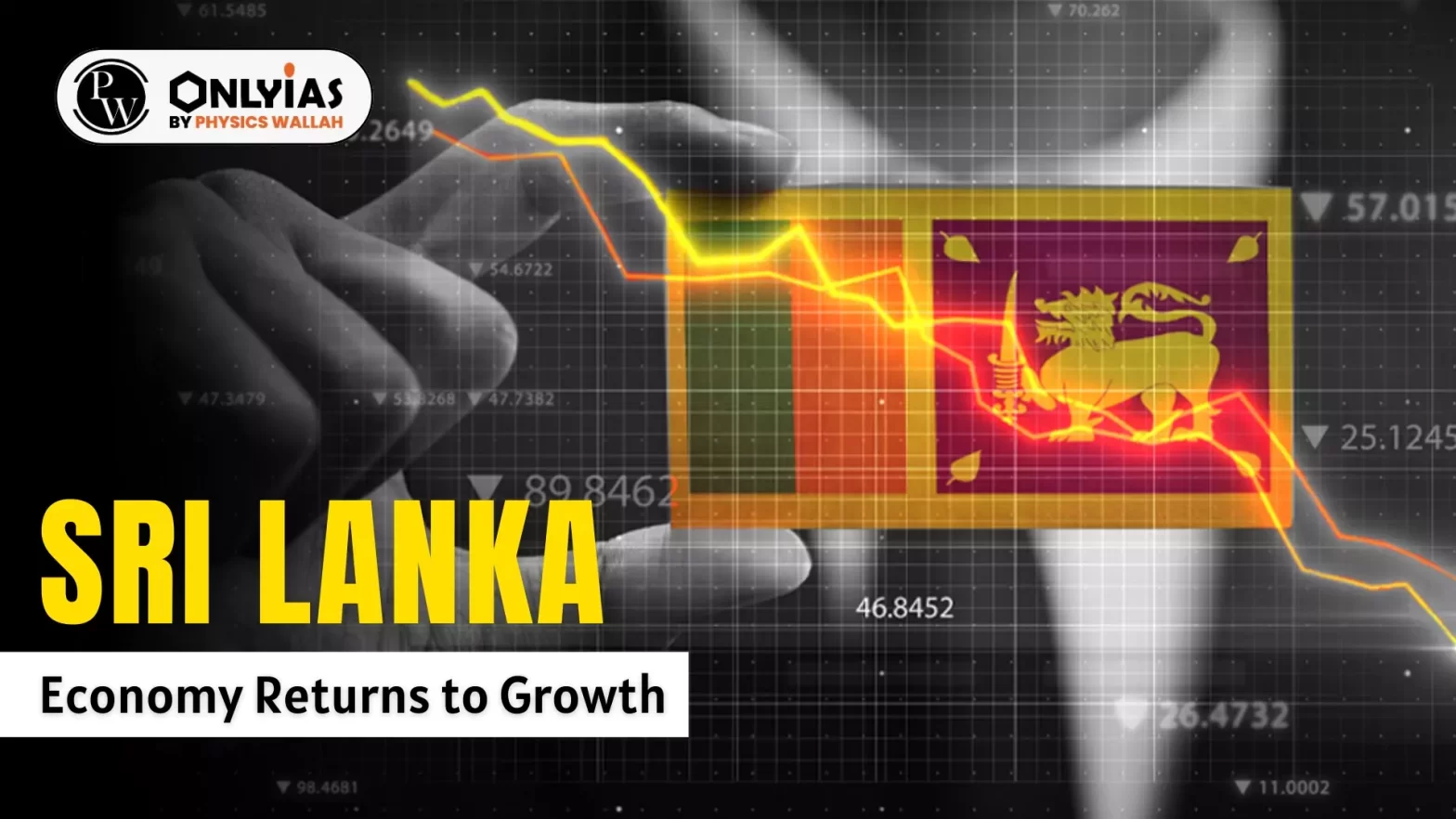Context:
This editorial is based on the news “Pulling Sri Lanka out of the abyss” which was published in the Hindu. Under Ranil Wickremasinghe, the President of Sri Lanka, the economic progress in Sri Lanka is visible after 18 months of stabilization policies and recently, the United National Party (UNP) proposed him as the national presidential candidate for the elections.
Sri Lanka Economy: An Overview
- Debt Defaulter: In April 2022, Sri Lanka became the first Asian country in the 21st century to pre-emptively default on debt, which amounted to over $50 billion.
- Devastating Economic Crisis: The Sri Lankan GDP contracted by 7.8%, year on year inflation escalation, the Sri Lankan rupee depreciated by 44.8% against the U.S. dollar, and usable foreign reserves fell to two weeks of imports creating shortages of medicine, food, and fuel.
Sri Lanka Economy Transitioning From An Economic Crisis to Recovery
- Counter Challenges: These Stabilization Policies included raising interest rates to control inflation, removing fuel subsidies, increasing taxes, passing a law to improve the independence of the Central Bank of Sri Lanka and initiating privatization of state-owned enterprises.
- External Aid: The government also sought Indian aid, intensified negotiations with the International Monetary Fund (IMF) on an Extended Fund Facility (EFF) and also foreign debt restructuring talks with private bondholders and bilateral creditors.
- Achievement of Progress: Progress is visible after 18 months of stabilization policies.
- Inflation fell to 4% in December 2023 and the Sri Lankan rupee appreciated by 12.1% against the U.S. dollar in 2023.
- Foreign exchange liquidity pressures eased. More import capacity means shortages of essentials and waiting lines have disappeared.
- The IMF projects a return to growth of 1.8% in 2024 compared with -3.6% in 2023.
Other Helping Factors to Sri To Sri Lanka Economy
- Foreign Direct Investment in Infrastructure: It is due to Sri Lanka’s strategic location in the Indian Ocean. This will expand the capacity of the port and improve transhipment trade with a growing Indian economy.
- India: A joint venture project between India’s Adani Group and Sri Lanka’s John Keells Holdings seeks to develop the $700 million West Container Terminal at Colombo Port.
- US: The U.S. Development Finance Corporation has committed $553 million.
- China: China’s Sinopec Group will also manage 200 fuel filling stations in Sri Lanka, and has committed $4.5 billion to an oil refinery in low-profit Hambantota Port.
- To Counter Debts: In November 2023, Sri Lanka concluded an initial agreement with key bilateral creditors, including India and the Paris Club, to restructure $5.9 billion in external debt. This was important for reducing interest payments and unlocking IMF financing in 2024.
- This deal followed China’s separate debt restructuring agreement with Sri Lanka. These agreements are on similar terms, extending deadlines and lowering interest rates.
Risks to Sri Lanka’s Outlook
- Sri Lanka needs sustained economic growth of 5-6% in the medium term to escape from indebtedness. But its outlook is vulnerable to external and internal risks.
- External: Geopolitical Competition between the U.S. and China.
- Internal: Debt Restructuring. Private bondholders, who held about 40% of external debt (end 2022), are concerned about the extent of the ‘haircut’ on debt they could face.
Conclusion
Political risks could derail the EFF and growth beyond 2024. The Policies taken by the Sri Lankan Government is appreciable and future governments need to take action on the similar lines to achieve more progress.
Also Read: India-Sri Lanka Relations
![]() 31 Jan 2024
31 Jan 2024

